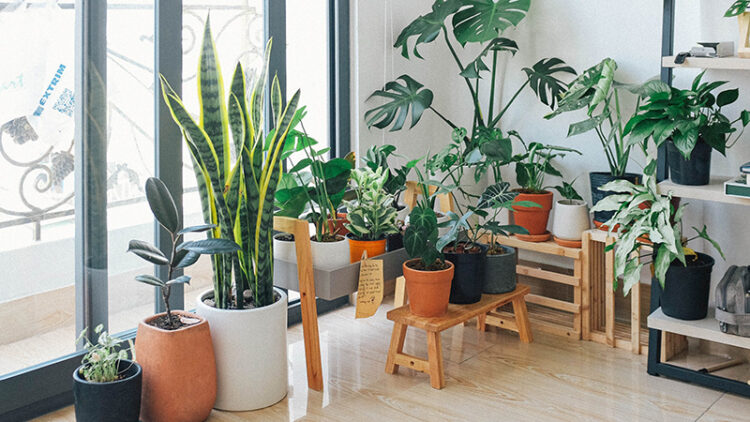Houseplants not only beautify an indoor space, but they also freshen up the air, help to boost your mood and even reduce stress levels.
There are many types of houseplants. Aroids from the family Araceae include common houseplants, such as Chinese Evergreen, Devil’s Ivy, Peace Lily and Philodendron.
“They tend to be low light, reliable and easy to care for,” said Dr. Clydette Alsup-Egbers, associate professor of environmental plant science at Missouri State University. “They’re considered hard to kill.”
Keep houseplants healthy and thriving
Placement matters
For a houseplant to thrive, it’s important to put it in the right place indoors.
“If you’re not familiar with a certain houseplant, do background research on it to find out where it grows best. If you’re buying from a garden center, ask the staff,” Alsup-Egbers said.
Spend time grooming
It’s necessary to groom houseplants often. This involves things like removing dead or dying leaves and checking for insects.
“If you do find little pests, use an alcohol solution, about 10% alcohol in water, and spray it on them,” Alsup-Egbers said.
When fertilizing, she advises to use a slow release type and about half of the recommended amount unless the plants are growing fast.
Since houseplants tend to grow toward the light source, which is usually a window, don’t forget to turn them.
“Every week or few weeks, turn those plants a quarter turn so they don’t start leaning always toward the window and will have a better upright appearance,” Alsup-Egbers said.
Humidity helps
Humidity levels indoors are usually lower, so it’s helpful to give houseplants a source of humidity.
To improve humidity for the plants, use a humidifier, place a stockpot of water on the stove or put plants on top of a tray with pebbles.
“Don’t try to spray the plants with water because you would need to be doing that practically every moment of the day to have much effect,” Alsup-Egbers said.
How much to water?
To determine if a plant needs more moisture, Alsup-Egbers suggests sticking your finger in the potting mix. If it’s dry down to about an inch, or your first knuckle, that’s usually time to water.
“You want to water until water comes out the holes in the base of the container. Then, remove the excess water by emptying the saucer,” Alsup-Egbers said.
Be careful not to overwater.
“More plants die from overwatering than anything else indoors, so it’s better to underwater than overwater,” Alsup-Egbers said.
Some plants like Airplane or Spider plants are susceptible to high fluoride levels in water. To recognize this problem, watch for brown or black tips on the leaves.
“If that happens, pour water in a bucket or watering can and let it sit for 24 hours before you water,” Alsup-Egbers said. “This allows the fluoride to evaporate into the air. The water also comes to room temperature, which is kinder for plants.”


Leave a Reply